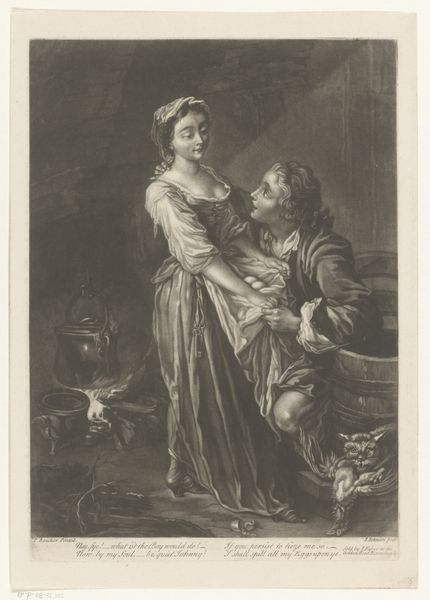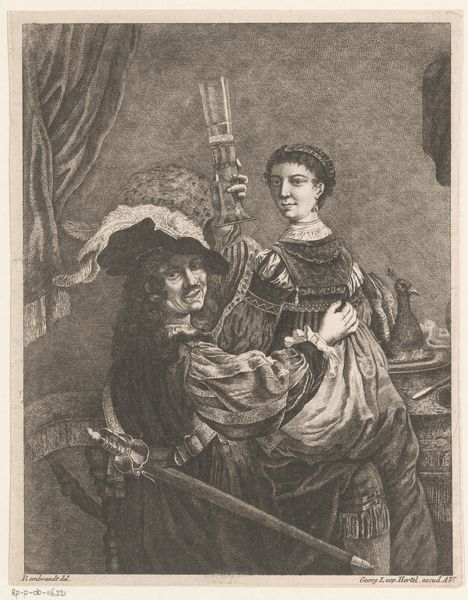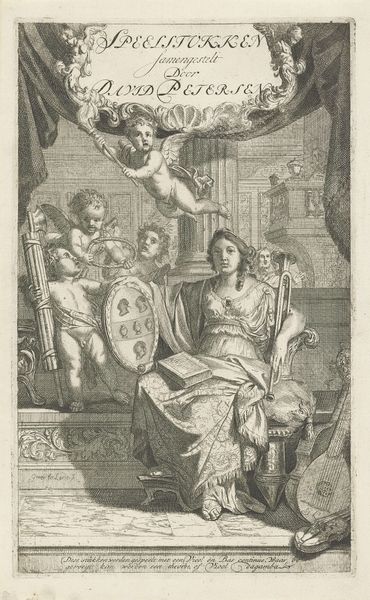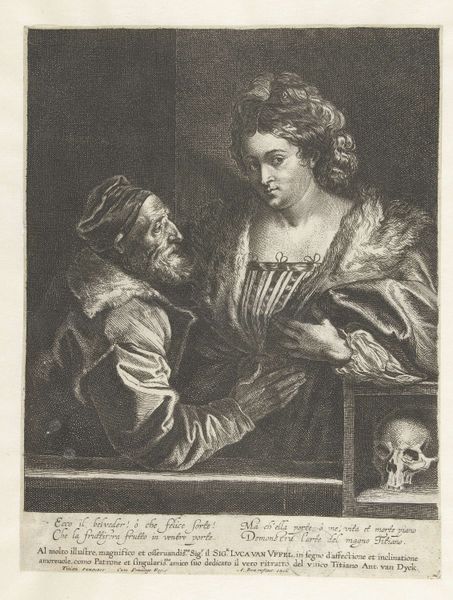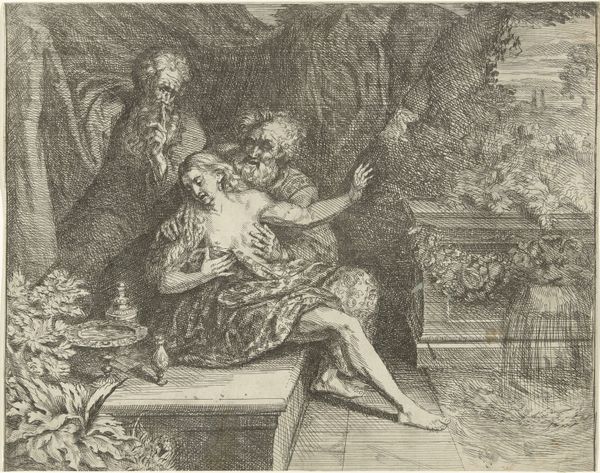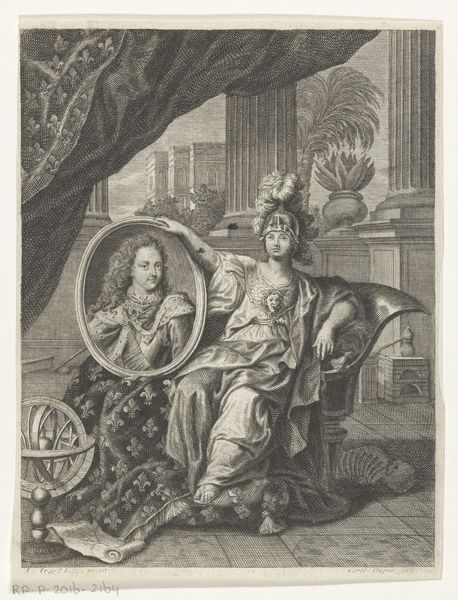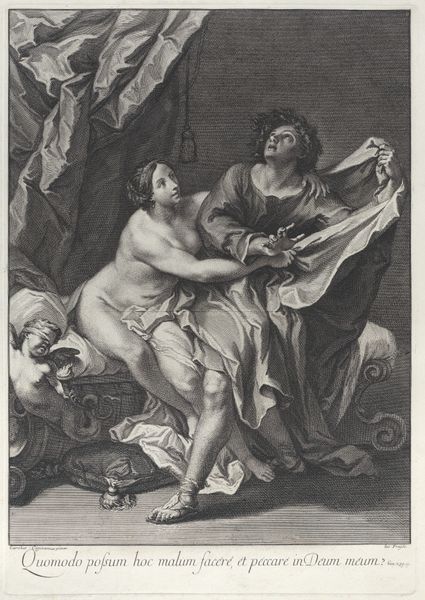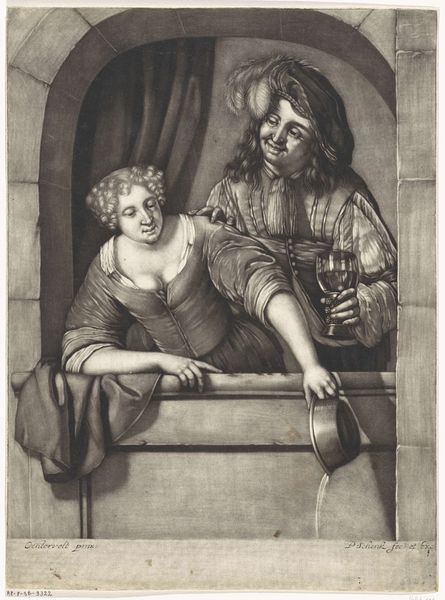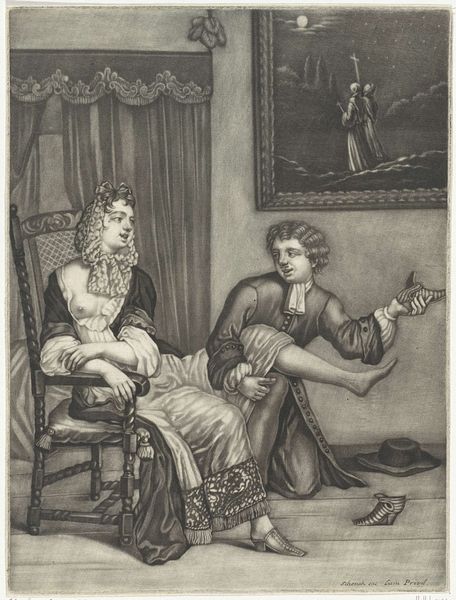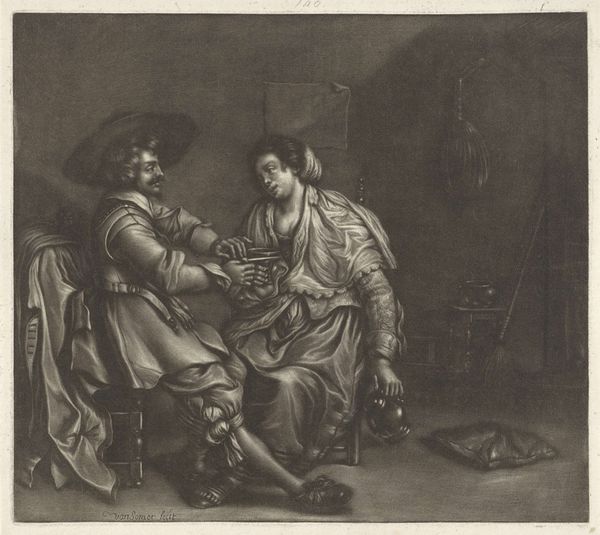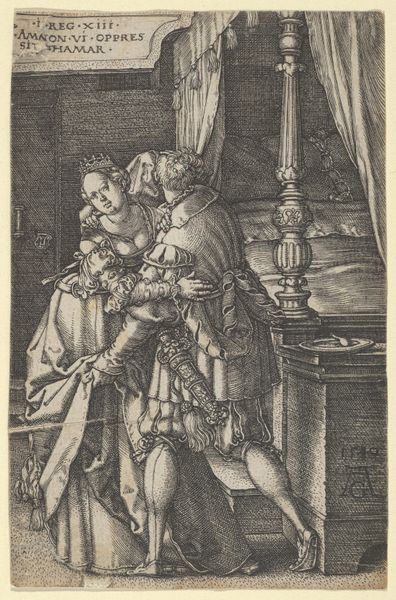
Jephtha dressed in armor looking up in despair, and his daughter holds a harp at right 1775
0:00
0:00
Dimensions: Sheet (Trimmed): 18 1/8 × 11 9/16 in. (46.1 × 29.4 cm)
Copyright: Public Domain
Editor: This engraving from 1775, "Jephtha dressed in armor looking up in despair, and his daughter holds a harp at right" by Johann Elias Haid, has such a somber tone. The figures are beautifully rendered, but there’s a heavy weight to the scene. What do you make of it? Curator: The heaviness, as you say, likely stems from the material conditions surrounding its production. This isn’t simply an image of despair; it’s a crafted object reflecting the social structures of 18th-century Europe. Consider the engraving process itself, the labour involved, the intended audience – likely wealthy patrons interested in moral narratives. Editor: So, you're suggesting we look beyond the emotional narrative to consider the actual making of it? Curator: Exactly. The material—the engraving—speaks volumes. Why an engraving instead of a painting, for example? How does that choice influence its accessibility, its potential market? This wasn't mass production, but it suggests wider circulation than, say, a unique oil painting might achieve. Also, look at the armor Jephtha wears – meticulously rendered. It denotes power, of course, but it also showcases the engraver's skill. Is it just narrative, or also a demonstration of technical expertise intended for a discerning clientele? Editor: That's interesting. So, the focus is not solely on the Biblical story but also on how the piece was conceived and marketed within its own specific context. It makes you wonder about the economics of art production at that time. Curator: Precisely! The choice of subject, the method of reproduction, even the way it was intended to be displayed – all these point towards understanding art not just as aesthetic expression but as a material product embedded in its socio-economic moment. This in turn gives insight into not only the artist but also the patron. Editor: I see! This way of looking at art definitely provides a more grounded understanding. I’ll never look at engravings the same way! Curator: And that's the beauty of a materialist perspective. It compels us to look beyond the surface, towards the tangible conditions that shape artistic creation.
Comments
No comments
Be the first to comment and join the conversation on the ultimate creative platform.
